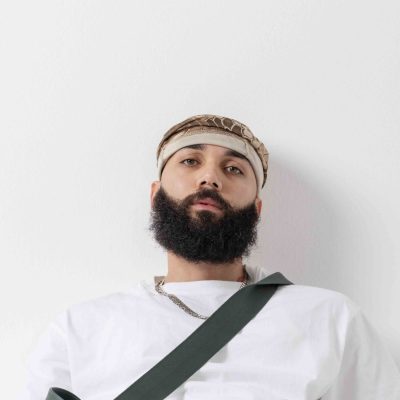Renowned designer Tahir Sultan, of Kuwaiti and Indian descent, exemplifies a profound appreciation for diverse cultures through his ventures in fashion, arts, architecture, and design. Beyond his eponymous brand, which spans product and interior design, fashion, and art installations, Tahir’s multifaceted interests extend to the culinary realm with Levantine/Gulf/Persian cuisine. An advocate for women’s empowerment, he integrates empowerment programs into his projects across India. In this exclusive CP magazine interview, Tahir reflects on his varied businesses, from interior design in Jaipur to Tahir Sultan Food, and shares insights into his solo exhibition, “THE CREATURES WITHIN,” a groundbreaking fusion of traditional craft, AI, and AR.
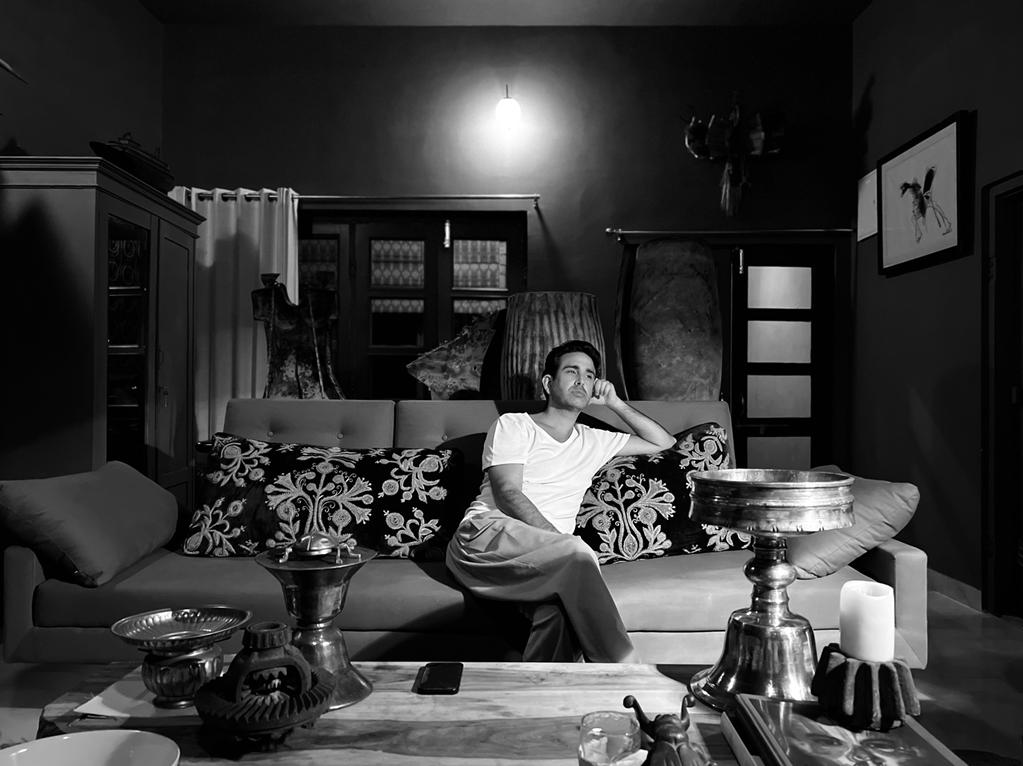
“Design is about blending the eclectic, the unusual, and the beautiful to create something harmoniously new.”
Hi Tahir, how would you reintroduce yourself to our readers once again?
From the last time I was interviewed I have started a lot of different interesting businesses which are creative and feed one another. During the lockdown I was In India and ended up moving from Delhi to Jaipur which is currently home. I have been living in India for the last four years and loving it.
My Various businesses include my interiors business where I design interiors for homes, stores and hotels. The business is not just limited to the design and sourcing of goods for my projects. I also source items for other interior designers as well as create bespoke pieces using artisans and crafts people. My store Makaan stocks an eclectic mix of items in Jaipur, which cater to the taste of both national and international clients.
During the lockdown I also started a food business called Tahir Sultan Food, which caters, Lebanese, Persian, and Gulf cuisine regionally in India, for exclusive dinner parties as well as weddings. This led to the concept of experimental experiential dining experiences where people are taken on a culinary journey, which in turn led to brands looking at how they creatively interact with high end clients in a quiet, private and fun environment, shedding the co-operate manner in which they are so used to functioning.
I have my uniforms business which creates cutting edge uniforms for restaurants and hotels as well as my fashion line that I downsized and now sell in my store.
I also just completed my first solo exhibition titled the creatures within where I pushed the boundaries of artisans and traditional craft, merged it with AI and AR to create an immersive experience which was innovative new, yet supported various collectives in various fields, like knitting, weaving, embroidery, painting and ceramics.
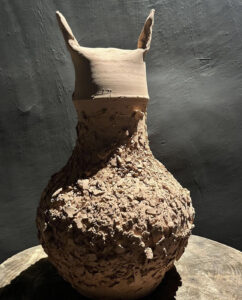

Tell us about your education.
My last year of high school was spent in Florence, studying renaissance art history, as well as modern European art history. I then moved to London and at the suggestion of Zaha Hadid applied to the Architectural association to Study architecture. I hated the program so I left and moved to India and worked in the fashion industry, (where I worked long hours and partied too hard) after a year or so I applied to Central Saint Martins to study fashion, and graduated with a degree in Fashion knitwear. I then went in to work with both McQueen and Jon Galliano, before starting my own line and showing at London Fashion Week. During that Avatar of my life I designed uniforms for the W Maldives showed at FFWD in Dubai and started the women’s collective for embroidery in Jaisalmer. I honestly got to a point where I hated what I was doing. Everyone thinks fashion is so glamorous but in reality it’s long hours, precarious financially and as a business owner I ended up dealing with so much incompetence and so many logistical issues that I found working in it full time was something I no longer wanted to do.
How has your work evolved since we last met you in 2012? What have we missed?
As mentioned I started all these new businesses. I also started a foundation called the Loomi foundation, whose aim is to adopt 16 refugee families with kids over the next 4 years, give the parents vocation, and educate their children. The parents will receive a free apartment and the family will have to enroll in a fellowship which includes learning a new language, art classes, a book club, learning a new sport, learning how to cook, as well as the nuances of agriculture. The aim is to create more caring well rounded individuals who will make the world a better place and go out and make their mark. This has always been a dream of mine as I remember what it was like to lose my country during the invasion and be a refugee. I have always wanted to find a way to really give back to society. The program will take place an hour outside of Jaipur in a collective called DHUN.

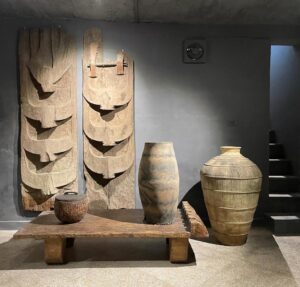
I also finally decided to follow my passion and show the world the art I create. So I now regularly do that and am constantly learning new skills and pushing the boundaries of my own knowledge.
I also started a consultancy company which helps brands with their creative representation of their products and launches and how they can be both innovative in the way they approach clients and the voice they lend a fresh voice to the market place.
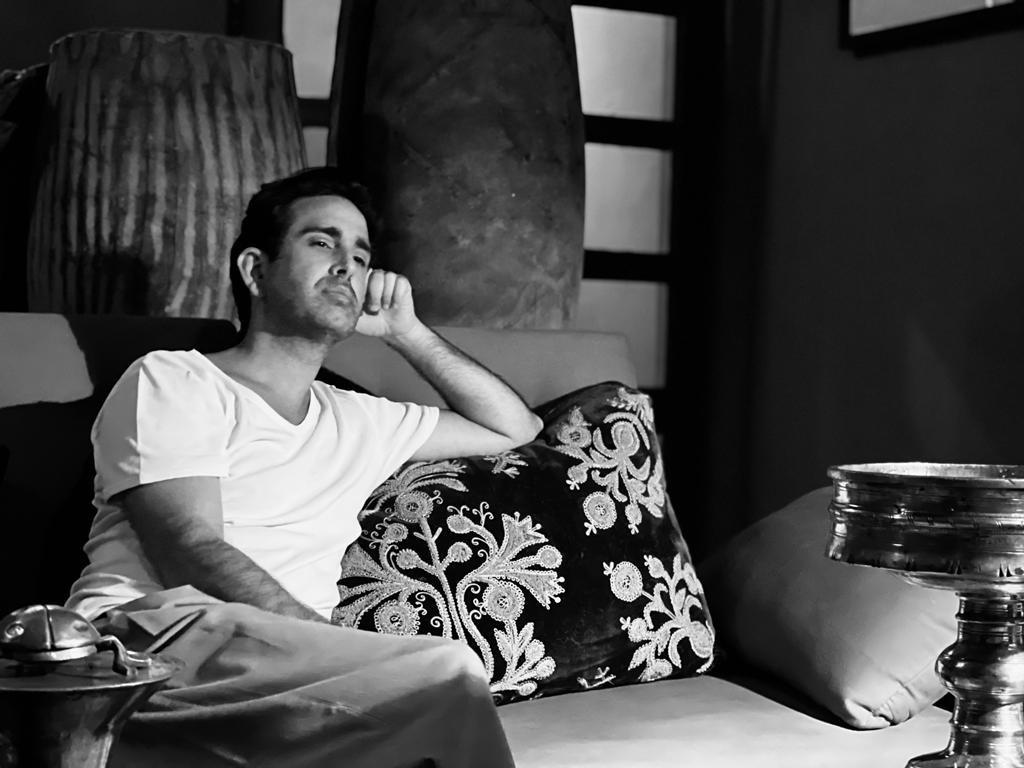
We’ve noticed how you display both traditional and modern aspects in your designs, can you tell us how you balance that?
Whether it’s my interior work, my fashion or the decor for my experiential dinners, or even the consultancy work I do. I am always searching for the eclectic, the unusual, the beautiful and the whimsical. I love combing different sensibilities to achieve / arrive at something new. Recently at a dinner party I took all these old orchids which only had their leaves left and dressed /draped them in black beads. The beads looked like a disease or a cobweb and was really evocative and beautiful. I am a modernist and traditionalist trapped in the same body so I guess I’m always trying to be harmonious with it.
What about aesthetics and sustainability balance in your fashion design collections?
Fashion is the smallest part of my business. People keep telling me to increase and expand it, but honestly it was such a nightmare and the business of fashion just isn’t what it once was.
If you want to talk about sustainability, then that’s a completely different conversation. I try to be as sustainable as I possibly can both in my personal life and my businesses. My home only has tissue paper, toilet paper, napkins and kitchen rolls made out of recycled paper that is bio degradable. My bin bags are also bio degradable. In my food business I work with potters and use low fired clay earthen ware to serve my food in which is Biodegradable and gives regular livelihood to a potter’s community. I started my food business during covid and wanted to try and help a community sustain themselves and it is a trend that really caught on and has been copied by so many other brands. Which I’m happy to see. Anything that reduces the use of plastic.
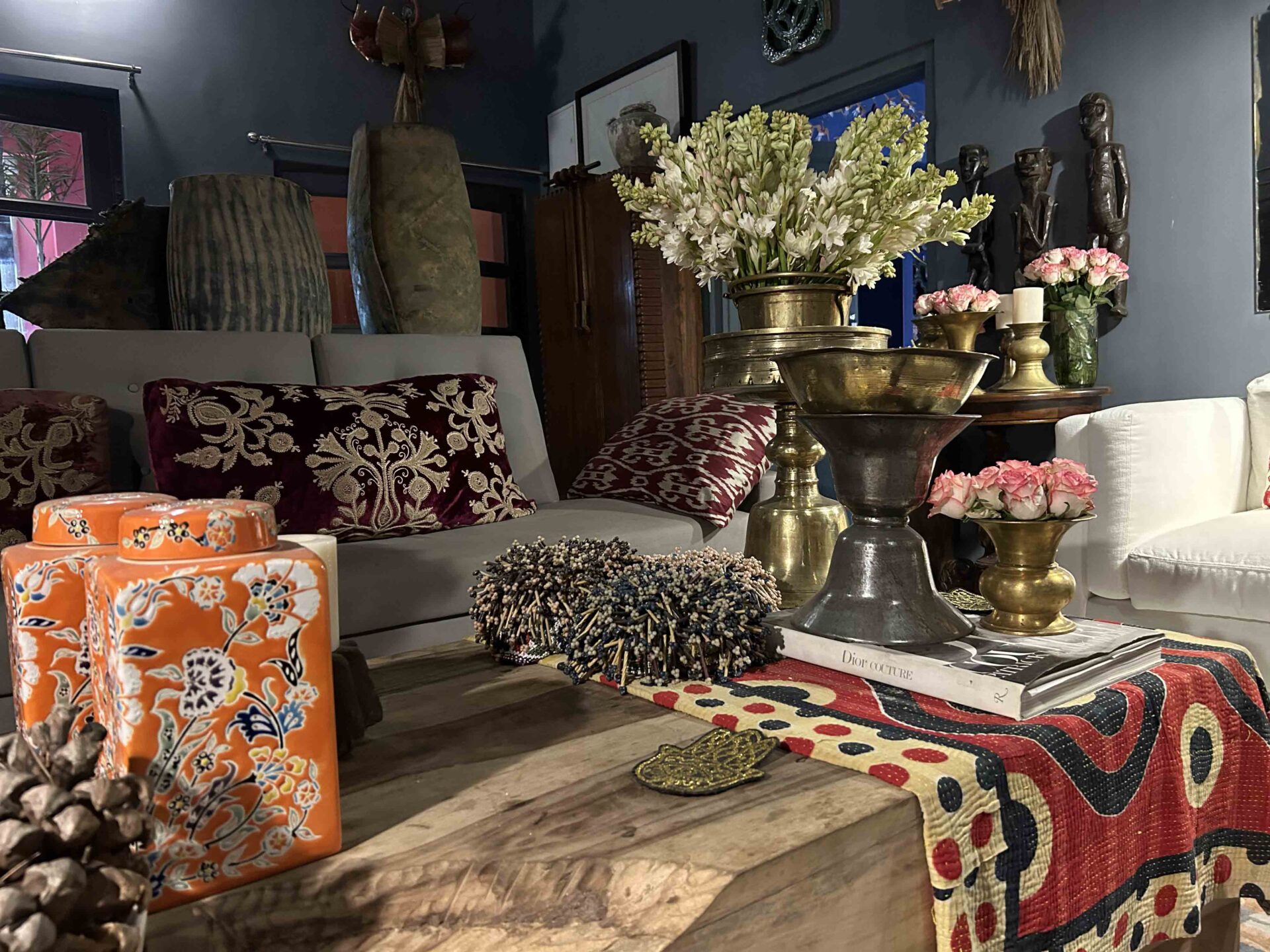
What steps do you take to minimize the environmental impact of your production and supply chain?
In my store I try and promote a lot of tribal, vintage furniture, so automatically you reduce the carbon footprint of the actual production of the pieces. I work with small vendors and artisans who are very conscious and use traditional methods and materials so the environmental impact is quite low. In the food business I try and work with local suppliers. We don’t touch GMO items and are very particular where our produce comes from. All the poultry is farm fresh, and as ethically sourced as one can be within the given parameters. We don’t use oils that are hydrogenated or processed foods. And of course a lot of what we use is recyclable.
I try and source as much naturally harvested, hand spun fabric that has been vegetable dyed. Or for the experiential projects go to markets that sell excess fabric that would otherwise be thrown away. Our bags are manufactured from these sort of fabrics and our candles are wrapped in them as well.
Have you faced any challenges to implement sustainability in your designs? How did you overcome them?
Sustainability is a big word a lot of people love to throw around. I use a lot of plants that can be reused. But I also use flowers when my work requires it. It’s a fine balance. There are fabrics which one uses that are not 100% natural, the reality is one does ones best where one can. I am very conscious and have made my teams very conscious and we use re-use or at least make sure materials we work with are biodegradable. My designs are very much based on crafts that are implemented at the grass root level so I don’t really have that problem.
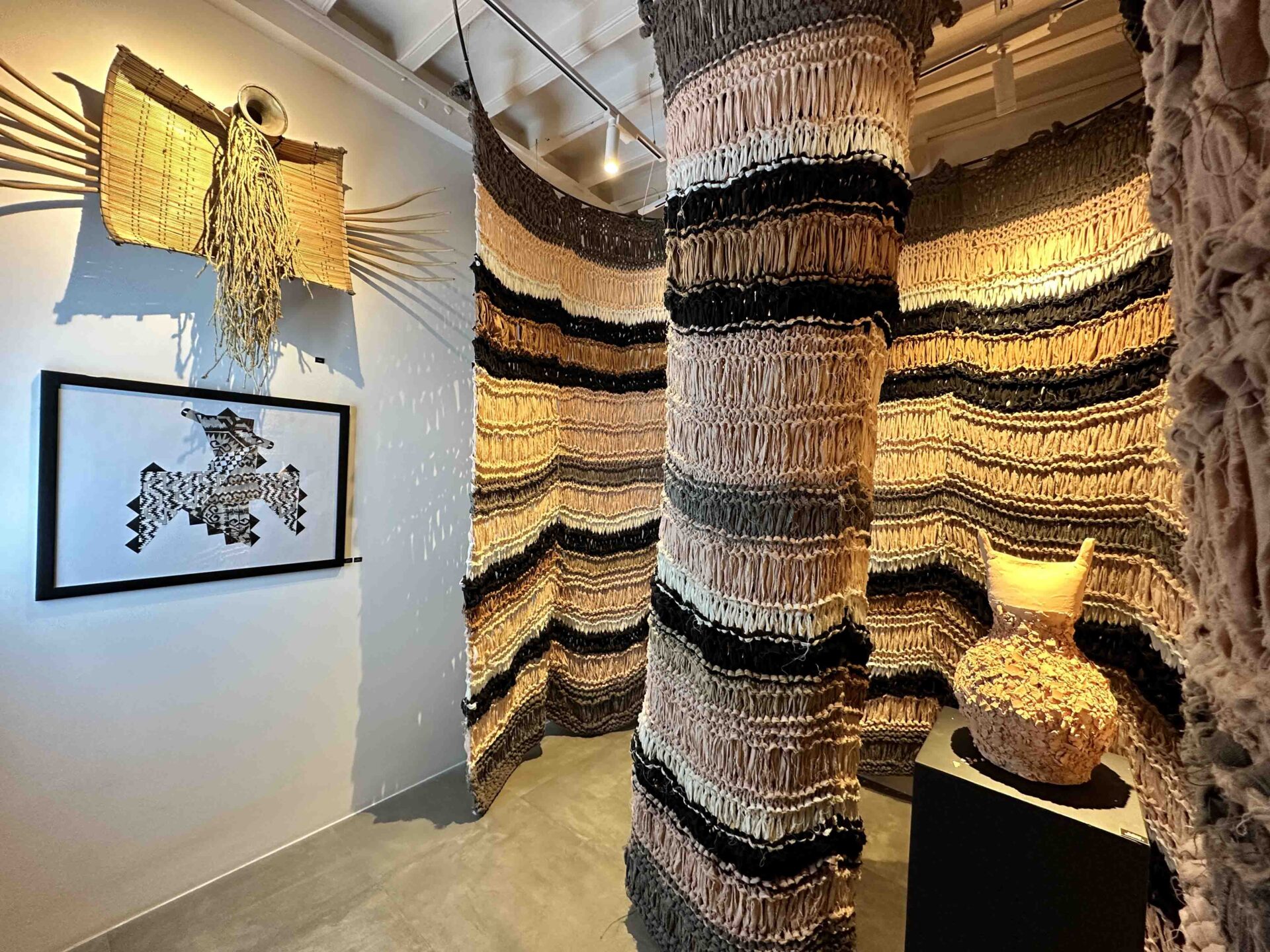
Does your ceramic crafting and fashion design ever inspire, influence, or affect the making of each other creatively? how so?
Everything feeds everything else. The weavers I worked with using Obeetee in Mirzapur to create the kilim trees, fed the design of the kilim eggs that the ceramicists created which in turn fed the design of the ink Ai bugs on paper which were born of Kilim motifs and moved. I work in so many different fields and mediums because it makes it super exciting for me and they naturally feed each other creatively.
How do you approach sustainability in the making of your interior space designs?
As mentioned a lot of my items are sourced so there is an almost zero carbon footprint bar the transport. I look at wood and items made of natural materials rather than artificially produced plastics and so forth. There is so much going on in India in terms of what one would deem ethical and naturally produced which makes it very exciting and less challenging than elsewhere.
Can you share your favourite materials or textures to work with in both clothing and piece/product designing?
I love working with clay, with yarn, with found repurposed scrap metal. I mean it’s hard to just pinpoint one fabric one texture or a certain sensibility. I run with what inspires me.
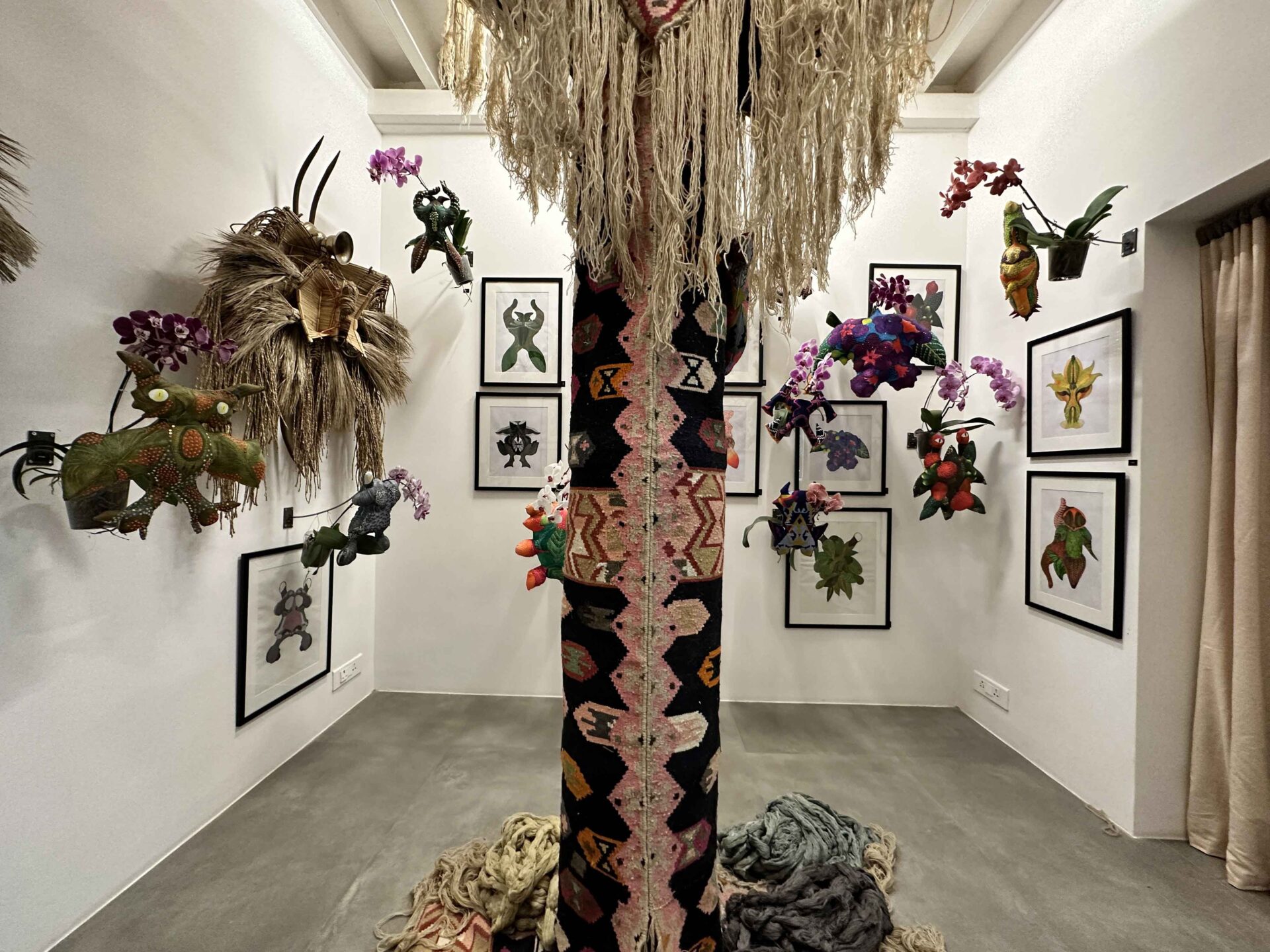
Tell us about your design process?
I’m always designing, making mental notes, experimenting with various collectives. I have welders come to the studio, painting workshops are held to see how we can push the boundaries on different materials and in different materiality. For the watercolours I am up nights working on them. I have colour charts I pour over to get just the right shade and tone. I also try and learn from the craftspeople to try and gain knowledge but also find a bridge. I find this really helps broaden my horizons of what gets created. Don’t get me wrong there are experiments which are terrible, or just don’t work out it’s all part of the process. I think the biggest problem is that I am very impatient and want everything to happen quickly where as in reality everything really takes a a lot of time. Also as one revisits pieces or projects ideas tend to change.
In your opinion, what is crucial to create a timeless piece of art?
What is a timeless piece of art? Who deems it timeless? Van Gogh sold almost nothing when he was alive but posthumously he is revered as one of the greatest artists of his Genre. I think authenticity is the single most important ingredient required to create a piece of art which contains depth. One may not always know where the heart, hand and mind lead you. But at some point in journey it all just comes together and clicks.

What is one quote you will always go by?
Why do it for yourself if you can get someone else to do it for you! No I’m just kidding. I think if I had to choose I would probably choose an amalgamation of misquoted sentiments and it would probably go something like, if you fall down get up and try again, nothing is fabulous in the beginning like a tree that bears fruit fabulous things take time. So, persevere and nurture that which you are creating and don’t listen to the naysayers. There are a lot of days where things are hard, where you may feel despondent. But the test is always at the 11th hour where you want to give up and nothing works out. The universe wants you to prove that you really want it before he hands it to you. So, stick with it and remember there is no such thing as a failure only a lesson. In society there is this stigma associated with failure, if something doesn’t work out you didn’t fail you just learnt how not to do it (all be it the hard way) pick yourself up and try again.
What are some of your other hobbies?
I love reading, I work out with a trainer every day for an hour 6 days a week and walk ten kilometres either before or after that. I host lots of dinner parties where I get to meet the most interesting people. I love travelling, searching for antiques, dancing till the sun comes up. Creating new recipes in the kitchen. The great thing about the above list is 95% of it is incorporated into my daily routine, as I am quite regimented. Or is part of my work life. So, really the only thing I struggle with is trying to get enough sleep.
What advice would you give young aspiring designers?
I would say create systems, check your cash flow, be pragmatic, work hard, be authentic and don’t worry what other people think. Your mission should be to inspire people so that they are inspired to go out into the world and make it a better place. Fiercely and passionately pursue what you love or even think you love, if it doesn’t work out at least you won’t have regrets.

Can you share some of your professional goals with us for 2024?
My professional goals are to finish the architectural design of the homes and communal spaces for my Refugee program and break ground building them. To try and create a larger team at work and grow my interiors business. I want to show my art work abroad, as well as create a new body of work with an exhibition towards the end of the year. I am also percolating a plan to open a restaurant lounge at some point, plus expand into other cuisines.







